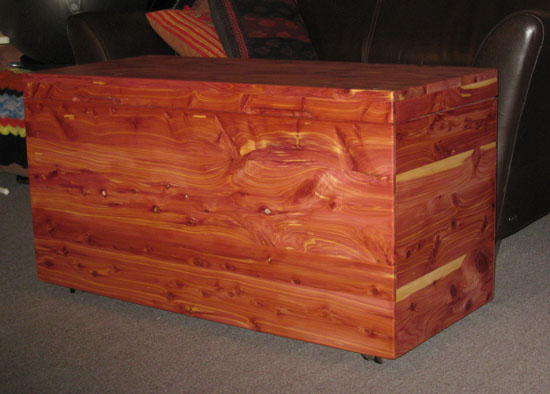The Making of a Hope Chest (Cedar Chest)
By Sara Kinakin
My name is Sara (Capa) Kinakin, and from time to time I have the pleasure of making a hope chest. I have been blessed with coming from a Doukhobor family, where growing up, I would often find those people that loved me in the garden or in the woodworking shop. What does that mean? Simply, that these things are a part of me.
I have a deep love of making hope chests, though in recent years this has not been very often. The hope chest is symbolic of many things, but perhaps the most historically significant is the transition into womanhood. When a young doukhobor receives a hope chest, it is a symbol of a place to put all of their hopes and dreams, a symbol of opportunity and new life, a connection from our ancestors all the way to us.
Once a hope chest is received, grandparents play a prominent role in filling it with gifts that will be the foundation from which a new household takes shape. There is something magical in making an item that recognises and honours a transition in life, in many ways, a rite of passage.
When I begin working on a hope chest, I start by pulling boards out of stacks that find themselves in shelves around the shop. I can only guess as to what they look like because they are all rough cut. Then, I take them through the planer and the smell of cedar fills the shop. The first glimpse of the grain is like opening a present. After all the boards have been cleared, the next task is to match them with each other. I move the boards around until they find the place that suits them most, perhaps something akin to roles we choose to embody in life. Then, they get glued and assembled.
I began making hope chests when I was in my early teens and over the years I have found answers to many of life’s lessons in the wood. Every stage of making it uncovers something new, something I hadn’t noticed before. Even the changing light of the day changes the approach to the wood. One must be cognisant of how outside influences affect what is done.
The grand finale for me is in timing, this moment happens during sanding. One spends all this time smoothing out edges and hard patches, that on occasion, one misses the point. There is a sweet spot in sanding that if you hit, makes the most beautiful cedar chest possible. Knowing the signs just before the sweet spot arises, has taken years to develop, and still, one must be diligent and sensitive. Like nurturing life, these two things are important.
My hope is that every chest I make for every young man or young woman holds a foundation that supports and fosters every transition in life, even when we sometimes forget to notice.



